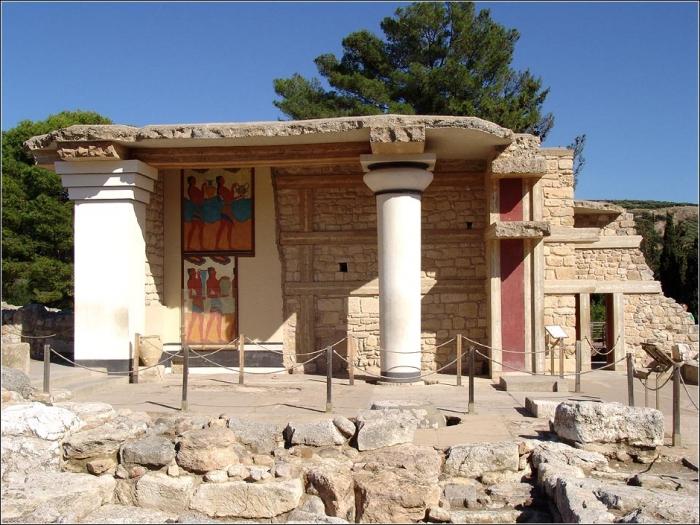The Knossos palace in Crete is considered the prototype of the mythical labyrinth of King Minos, where he hid the terrible Minotaur. When the legend about this monster was recorded, the building was destroyed long ago, and everyone has already forgotten about the Minoan civilization. For this reason, the palace itself was considered something fictitious, unrealistic. This went on until the moment when in 1878 Minos Kalokerinos turned his attention to the hill. During the excavations, the archaeologist discovered storage facilities that were part of the complex of the royal palace. At that time, Crete was occupied by the Turks, so the study of ancient civilizations was postponed until better times.
The Knossos palace in Crete again became the center of attention in 1894 when Arthur Evans found out about him. He bought land in the area of the alleged location of the building and in 1900 began excavation. Such large-scale discoveries have long been unknown to mankind, literally every
day, archaeologists have found something new. Many statues, frescoes, bronze vessels, playing boards, stone vases were lifted from the ground. Answers to many questions were found, but also blank spots remained in the history of the Minoan civilization. For example, so far, researchers have not been able to decipher linear letters.
Evans decided not only to conduct large-scale excavations, but also partially restore the Knossos palace in Crete. Photos of this building can now be seen on many postcards, in guidebooks. Although his contemporaries criticized Evans, it is thanks to the tremendous work done by him that we can look into the past and learn a little about the life and culture of the ancient people who lived in 1900 BC. e. What was restored by Evans is already the second palace built in 1450 BC. e., the first was destroyed by a strong earthquake.

It is very difficult to study the culture of people who lived many millennia ago, but nevertheless the archaeologist succeeded. The Knossos palace in Crete was not only the home of the king, dignitaries and priests, it was also the administrative and economic center of the city of Knossos, in which at that time about 90,000 people lived. The palace was built 5 km from the modern capital of the island - Heraklion. Its dimensions were 180 x 130 m and contained about 1000 rooms, warehouses, a sewage system, courtyards and halls.
The Minoans did not adhere to symmetry, therefore the Palace of Knossos in Crete resembles a maze, only one who knew his layout well could get out of it. It was especially easy to get lost in the utility rooms located on the lower floors. On the walls there is very often an image of a double poleax - a labris. Most likely, it was a sacred symbol of this people, therefore there is an opinion that the word “labyrinth” came from the Lydian “labris”, but these are only assumptions.
Everyone who wants to get acquainted with the ancient Minoan civilization and find out some of its secrets, understand the culture and traditions of this people should come to the address: Knossos Palace, Crete, Greece. This is the main attraction of the island, making an indelible impression on visitors. Archaeologists have solved many mysteries, but it cannot be said that everything is clear. Minoan civilization holds many secrets, and if we learn about them, only time will tell.